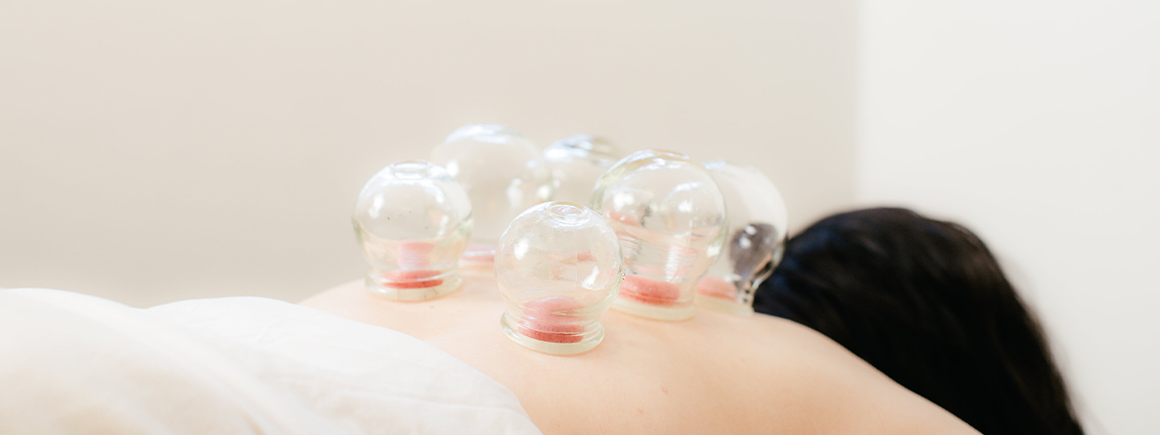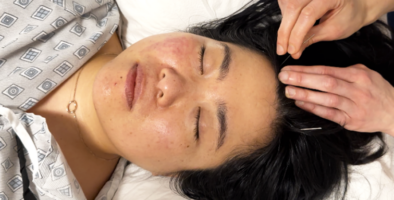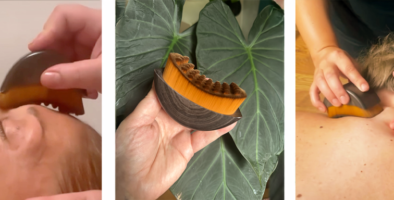What is Cupping Therapy?
Get to know this Traditional Chinese modality.
You’ve probably seen photos of athletes with intriguing circular bruises on their backs. Those marks are evidence of cupping therapy, an ancient technique that’s grown in popularity in the last decade. It’s a Traditional Chinese therapy in which practitioners place cups, often glass or plastic, on the skin to create suction and increase circulation. Sportspeople love the treatment because it can improve recovery time, but you don’t need to be an Olympian to benefit from cupping’s pain-relieving properties.
What does cupping therapy do?
The suction from the cups draws blood to the area, breaking tiny blood vessels under your skin and stimulating more blood flow, which helps reduce inflammation, muscle pain, and injury recovery time. The vacuum effect can also release tight fascia (connective tissue), improve your flexibility, and stimulate your lymphatic system, helping your body flush out waste. Also, like a deep tissue massage, the pressure (and calming space it’s performed in) can simply be relaxing.
Types of Cupping Therapy
Cupping therapy is an art; practitioners don’t follow one cookie-cutter template. They work with your body to determine the best technique for your issue. Practitioners employ cupping and suction methods in a few ways:
- Dry cupping involves placing cups on the skin and suctioning out air (via fire, manual, or electrical vacuum). It’s appropriate for muscle recovery.
- Wet cupping is controlled bleeding. Your provider makes small incisions on the skin and applies the cup to draw out a small amount of blood. This treatment is used to treat inflammatory pain conditions.
- Flash cupping is when a practitioner quickly applies and removes the cups from the skin. It’s less intense and is meant to stimulate the lymphatic system.
- Massage cupping, also known as moving or dynamic cupping, is similar to a massage. It involves moving the suctioned cups over the body to relax muscles and improve circulation.
- Myofascial decompression (MFD) cupping is the physical therapy style of cupping, and is the type of cupping that is performed on Olympic and professional athletes. This is a newer form of cupping therapy that we will take a deeper dive into in a future blog. The application is similar to Chinese medicine cupping, however an electronic pressure device is used to achieve more precise pressure ranges and the cupping is incorporated with active release techniques to increase functional range of motion and recovery from injuries.
Cupping with Acupuncture
Combining cupping therapy with acupuncture can enhance the therapeutic effects of both treatments. The duo can effectively reduce stress, support holistic health, and address specific conditions like chronic pain, musculoskeletal issues, and respiratory problems.
How often should you do cupping?
How frequently you should go for a cupping session varies based on your health needs and goals. You can get cupping done once a week for acute conditions until you feel better. For chronic conditions, you might require sessions every two to four weeks. Monthly sessions can be beneficial for general maintenance.
It’s best to make an appointment with a qualified practitioner who can tailor the frequency to your needs and monitor your response to the therapy.
What should you expect after cupping?
You might experience immediate pain relief and improved flexibility. You’ll likely feel relaxed! However, cupping therapy can have minor side effects. Expect circular bruises where the cups were applied or a stripe-like bruise with massage cupping, both of which typically fade within a few days. Your skin may be sensitive, mildly sore, and tight, akin to post-massage sensations. Simply stay hydrated, rest, avoid extreme temperatures for a day or two post-session, and revel in the fact that you did something good for your body.




